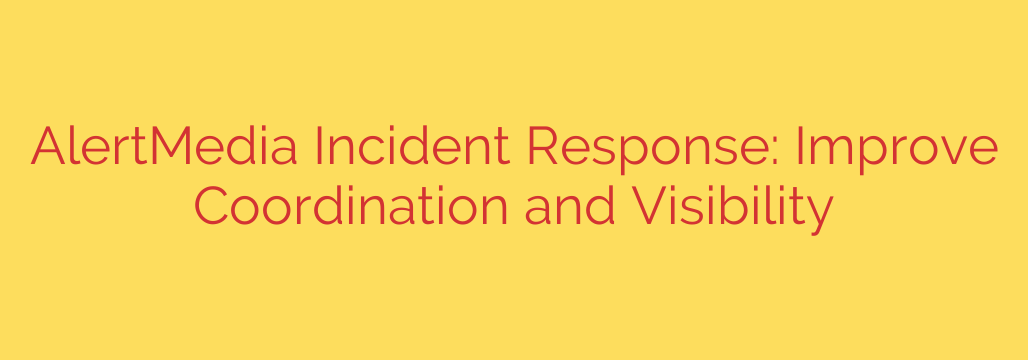
Elevating Incident Response: Why Coordination and Visibility Are Paramount
In today’s unpredictable world, the ability to effectively manage disruptive events is not just an operational necessity – it’s a cornerstone of organizational resilience. Whether facing a natural disaster, a security breach, or a widespread operational failure, how quickly and effectively your organization responds can dramatically impact safety, minimize damage, and ensure business continuity. However, many organizations struggle with incident response that is fragmented, slow, and lacks critical information when it’s needed most.
The core challenges often stem from poor communication and a lack of real-time visibility across response teams and affected stakeholders. Relying on disparate systems, manual processes, and uncoordinated communication channels can lead to delays, confusion, and ultimately, a less effective response. Teams may not have the same situational awareness, crucial tasks can be missed, and leadership might lack the comprehensive view needed for timely, informed decisions.
Improving incident response hinges on achieving centralized coordination and real-time visibility. This means bringing all essential elements of the response – communication, task management, resource allocation, and information sharing – into a unified framework that provides a single, accurate source of truth during a crisis.
Leveraging a dedicated platform designed for incident management can transform chaotic situations into organized, efficient responses. Key capabilities often include:
- Real-time, multi-channel communication: Instantly connect with response teams, employees, and stakeholders via various methods (SMS, email, app alerts) to ensure everyone receives critical updates regardless of location or device.
- Unified situational awareness: Consolidate incoming information, impact assessments, and team status updates into a single, dynamic view, giving responders and leaders a clear picture of the evolving situation.
- Structured response workflows: Utilize pre-built or customizable response plans, assigning tasks, tracking progress, and ensuring critical steps are followed systematically.
- Integrated task management: Assign specific duties to individuals or teams, monitor completion status, and maintain accountability throughout the incident lifecycle.
- Comprehensive reporting and analysis: Document all actions, communications, and key events during an incident for post-incident review, compliance, and continuous improvement.
By implementing technology that provides these capabilities, organizations can achieve faster response times, improve situational awareness, and enable better decision-making under pressure. This structured approach ensures that the right people have the right information at the right time, facilitating seamless collaboration even when teams are distributed.
Actionable Tip: To enhance your incident response capabilities, develop clear, actionable response plans for various potential scenarios. Train your teams regularly on these plans and the tools they will use. Critically, leverage integrated technology that centralizes communication, tasking, and information to provide that essential real-time visibility needed to coordinate effectively when every second counts.
Ultimately, optimizing incident response through enhanced coordination and visibility is not just about managing crises; it’s about building a more resilient organization capable of protecting its people, assets, and reputation effectively.
Source: https://www.helpnetsecurity.com/2025/07/09/alertmedia-incident-response/








